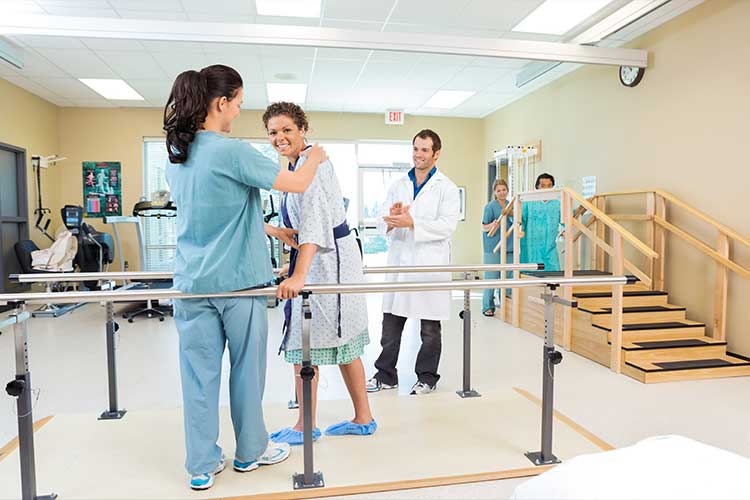Providing education to patients and their families is one of the most important aspects of nursing care.
This can be education about practically anything, but most commonly: pain management, bowel management, physical restrictions, medication side effects … the list goes on.
Education is essential to the patient and can vary quite dramatically depending on their individual needs.
In terms of the surgical patient, some of the most important education we provide is preoperative education before surgery.
The goal of preoperative education is to not only prepare the patient for surgery but also to prepare them for what to expect following the surgery. Therefore, it can be quite extensive.
In this article, we’ll look at some of the common areas of preoperative education.
Preoperative preparation allows patients to:
- Gain a better understanding of their surgery
- Feel more in control
- Experience decreased postoperative pain and anxiety
- Decrease the length of their hospital stay
- Have a quicker recuperative period.
(Tollefson et al. 2012)
Information should be provided not only to the individual undergoing the surgery but also to their family and relatives if required.
Each member of the surgical team will focus on different components of education. For example, the surgeon will discuss and gain consent for the surgery, the anaesthetist will discuss their role and what to expect from the anaesthetic experience, and the nurse will discuss nursing aspects of care and education such as deep breathing and coughing exercises.

Why is Providing Information Important?
An understanding of what is occurring and why promotes a sense of control that helps to allay any patient anxiety.
Information may need to be repeated at times, as anxiety can cause the individual to have difficulty retaining information. The patient should also be assessed on their prior knowledge so that the information provided to them is appropriate and presented in language that they understand.
Sometimes, written material may be used to help the individual retain information (Koutoukidis et al. 2017).
Information should include:
- Preoperative procedures and the rationale for these procedures such as fasting, stopping anticoagulation therapy, etc.
- Preparations required, such as the insertion of an intravenous cannula or pre-medications, and what sensations may be felt when the anaesthesia is induced
- Information regarding the post-anaesthetic care unit
- What to expect postoperatively, for example, IV fluids and wound drains
- Postoperative activities the patient will be expected to do, such as deep breathing and coughing, and early mobilisation
- Pain management
- Any other information specific to the surgery or relevant to the patient.
(Koutoukidis et al. 2017)
Preoperative Education
Preoperative education is not only important to reduce the risk of postoperative complications from occurring, but also allows the individual to take an active role in their recovery and can help them regain a sense of control during a time when they may feel events are out of their control (Koutoukidis et al. 2017).
Any preoperative teaching should occur over a prolonged period of time in order to give the patient the opportunity to ask questions and ensure information is assimilated. Therefore, ideally, this teaching and education isn’t done on the day of surgery but is an ongoing process that begins during the pre-admission visit (Farrell & Dempsey 2013).
Deep Breathing and Coughing
Preoperative education may include instructions on completing deep breathing and coughing exercises postoperatively.
Deep breathing and coughing improves blood oxygenation and promotes lung expansion as well as facilitating gas exchange and expectorating any accumulated mucus in the lungs. This is an important exercise for patients to complete during their postoperative period to help decrease the risk of respiratory complications such as pneumonia from occurring (Farrell & Dempsey 2013; Koutoukidis et al. 2017).
During this exercise, the individual is told to take several deep breaths, followed by a short breath and cough. If they have any wounds, they will also be educated on how to protect and support them with their hands or a pillow during these exercises (Koutoukidis et al. 2017).
Deep Vein Thrombosis (DVT) Risk Reduction
Patients will also be educated on performing bed leg exercises and the benefits of early mobilisation (if able) following the surgery in order to decrease the risk of DVT formation. Exercises and mobilisation help stimulate blood circulation and increase venous return, which then decreases the risk of blood clot formation from venous stasis. The patient may also be informed about the use of compression devices such as TED stockings, which can also be used to help prevent DVTs (Koutoukidis et al. 2017).
Promoting Activity and Exercise

Not only does early mobilisation help protect patients against clot formation, but it also helps to promote optimal respiratory function and the return of bowel peristalsis. However, pain and the fear of causing harm to themself can impede on the patient’s participation in early mobilisation.
Therefore, preoperative teaching needs to address the expectations of performing activities and mobilising postoperatively, as well as provide reassurance and strategies such as splinting incisions to make this task measurable for the patient (Farrell & Dempsey 2013; Tollefson et al. 2012).
Sometimes, it can be difficult for the individual to participate in movement exercise postoperatively due to pain, nausea or dizziness. The nurse must ensure these factors are controlled to promote early mobilisation.
Key benefits of early ambulation include:
- Prevention of respiratory complications, as deep breathing promotes lung expansion
- Prevention of vascular complications due to the stimulating effect ambulation has on the circulatory system
- Improved muscle tone and strength
- Easier elimination
- Reduced risk of pressure injury formation
- Improved patient morale.
(Farrell & Dempsey 2013; Koutoukidis et al. 2017)
Promoting exercise and activity is one of the most important aspects of preoperative education and postoperative care. In order for the patient to be safely discharged home, they need to be able to independently and safely perform activities such as toileting and transfers, as well as ambulate a functional distance safely and independently (Farrell & Dempsey 2013).
Pressure Injuries
Patients should also be preoperatively educated on their risk of developing pressure injuries and how to decrease this risk by performing regular position changes. If the patient is unable to do so independently, the nurse will need to assist them postoperatively or educate the patient on techniques to facilitate movement (Duggin 2017).
Pain Management
Patients should be educated on pain management and what to expect following their surgery. Patients will often be worried about their postoperative pain. Therefore, it is important that preoperative teaching involves giving the patient reassurance as well as education about pain management.
It is also important that the patient is educated about pain rating scales, which will be used during the postoperative period. This is especially important if the patient will be using a patient-controlled analgesia device (Farrell & Dempsey 2013; Tollefson et al. 2012).
Elimination
One of the most common complications following surgery is constipation. Therefore, education on strategies to relieve and prevent constipation is essential.
The patient should be encouraged to mobilise early to ensure that once they can tolerate diet and fluids, they maintain adequate fluid intake and eat foods high in fibre (Koutoukidis et al. 2017).
Delirium
Delirium is a common postoperative complication, especially among older adults, and may increase the risk of morbidity and mortality (Xue et al. 2020).
In addition to reducing the risk of postoperative delirium, individualised preoperative education may also increase recovery speed (Xue et al. 2020).
Conclusion
As you can see, preoperative education involves many areas. It is important to remember that all education should be individualised to each patient and their specific information needs.
Topics
References
- Duggin, J 2017, ‘Nursing in the Perioperative Care Environment’, in Koutoukidis, G & Stainton, K (eds), Essential Enrolled Nursing Skills For Person-Centered Care, Elsevier, Chatswood.
- Farrell, M & Dempsey, J 2013, Smeltzer and Bare’s Textbook of Medical-Surgical Nursing, 3rd edn, Lippincott Williams & Wilkins, Broadway.
- Koutoukidis, G, Stainton, K & Hughson, J (eds) 2017, Tabbner’s Nursing Care: Theory and Practice, 7th edn, Elsevier, Chatswood.
- Tollefson, J, Bishop, T, Jelly, E, Watson, G & Tambree, K (eds) 2012, Essential Clinical Skills, 2nd edn, Cengage Learning, South Melbourne.
- Xue, X, Wang, P, Wang, J, Li, X, Peng, F & Wang, Z, ‘Preoperative Individualized Education Intervention Reduces Delirium After Cardiac Surgery: A Randomized Controlled Study’, J Thorac Dis., vol. 12 no. 5, viewed 9 October 2020, https://www.ncbi.nlm.nih.gov/pmc/articles/PMC7330376/
 New
New 
